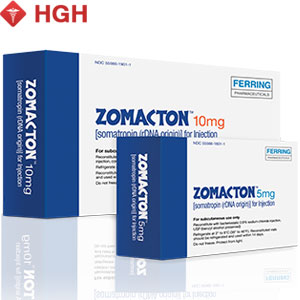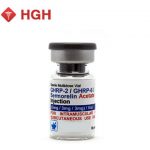Much of human development is controlled by hormones, a type of body chemical that communicates signals to various organs and tissues. The important act of developing and regulating sexual characteristics is primarily done through the work of sex hormones. Most women know about estrogen, the hormone that does everything from regulating the menstrual cycle to maintaining bone density, but testosterone is often misunderstood among both men and women. The effects of testosterone treatment on women might not be as noticeable as the effects of testosterone treatment on men, but this hormone still has an important role in female health.
Natural Levels of Testosterone in Women
Since testosterone is viewed as a male hormone, many women mistakenly assume that women should not have any testosterone. However, this is not actually true. The reality is that women need some testosterone to function properly. Men definitely have higher amounts of testosterone, but women naturally produce some testosterone from both their ovaries and their adrenal glands. The exact level of testosterone in a female can vary, but women typically have somewhere between 15 to 70 nanograms of testosterone per deciliter. This is significantly lower than the 280 to 1,110 nanograms per deciliter that men tend to have.
Just like in men, testosterone in women changes with age. At first, it starts out fairly low. A hike in testosterone levels typically signals the onset of puberty, and then testosterone continues to rise at a slow rate throughout the teen years. It typically peaks some time in early adulthood. After this, testosterone levels in women start to drop back down again. The reduction in testosterone is very low while estrogen reduction happens much faster, so women end up with a proportionally higher amount of testosterone compared to estrogen as they age.
The Effects of Testosterone on the Female Body
Effects of testosterone on women might be less subtle than the effects of estrogen, but they are still very real. The female body needs testosterone for several different functions. One of testosterone's primary roles is fertility. Women's testosterone levels follow their menstrual cycle, and they experience a tiny boost in testosterone during ovulation. This increase in testosterone boosts blood circulation and increases the amount of cervical mucus produced. The heightened levels of cervical mucus make it easier for sperm to reach the cervix and fertilize eggs. Without testosterone, women may have delayed ovulation or irregular periods.
As a sex hormone, a lot of the effects of testosterone on the female body are primarily related to reproduction and sex. However, this is not the only thing testosterone does. This hormone is also essential for the production of red blood cells and muscle mass, and it helps to govern fat distribution. Testosterone keeps the body from storing fat in the thighs and stomach. When paired with a healthy diet and exercise, testosterone can reduce fat stores overall. Those who are overweight and have heightened testosterone tend to store more of their fat in their stomach. In addition to shifting fat distribution, testosterone also allows women to build muscles more easily. This can let them gain muscle mass more effectively when they are weight lifting and exercise. Since it is needed for healthy red blood cells, testosterone has an important role in maintaining overall health. Strong red blood cells help to carry oxygen throughout the body, so maintaining proper testosterone levels results in people feeling alert, refreshed, and focused.
How You Can Tell If Your Testosterone Is Too High or Low
Because the effects of testosterone on women have such a powerful impact on the body, it is important for women to maintain testosterone levels within a certain limit. Testosterone's effects are typically strong enough that you can notice them without having to measure them. There are many conditions that can cause high testosterone, including polycystic ovary syndrome and certain types of tumors.
If you have abnormally high testosterone, you may end up with these issues:
- Excessive amounts of body hair, especially on the chin or upper lip
- Irregular periods or the absence of periods
- Frequent and severe acne
- Clitoral enlargement
- Reduced scalp hair, particularly along the hairline
- An increased muscle mass
- Deepening or hoarse voice
- Reduced breast size
- Oily skin
- Difficulty conceiving or carrying to full term
While excessively high levels can cause some issues, very low testosterone can also result in problems. Low testosterone in women may happen if they are going through menopause, have adrenal insufficiency, or do not have both of their ovaries. Women with low testosterone tend to have these symptoms:
- A greatly diminished libido
- Weakened and easily breakable bones
- Fatigue
- Weight gain
- Fertility problems
- Trouble sleeping
- Memory problems
- Vaginal dryness
- Fertility problems
- Menstrual cycle irregularities
Being able to maintain the right amount of testosterone in your body may be difficult, and improper testosterone levels cause all sorts of issues. If you suspect that something might not be right with your testosterone, it is important to get it tested and treated as soon as possible. The effects of testosterone treatment can help you to regain your health. Talk to your doctor about the possibility of hormone management therapy.




